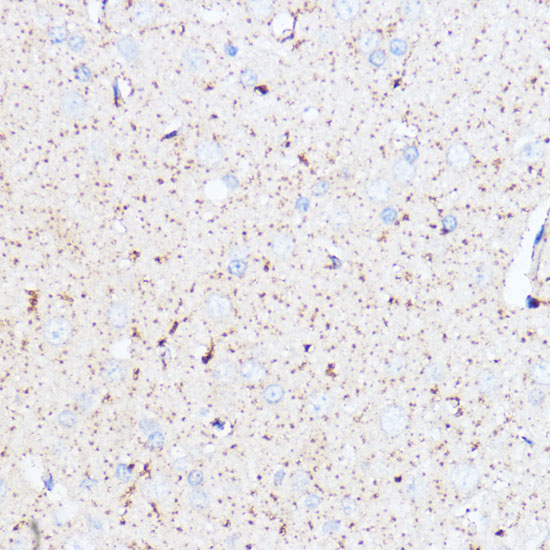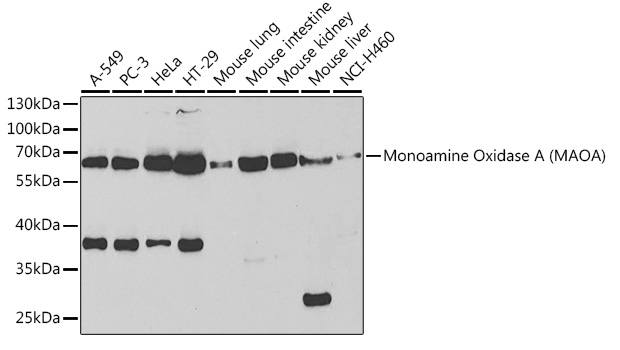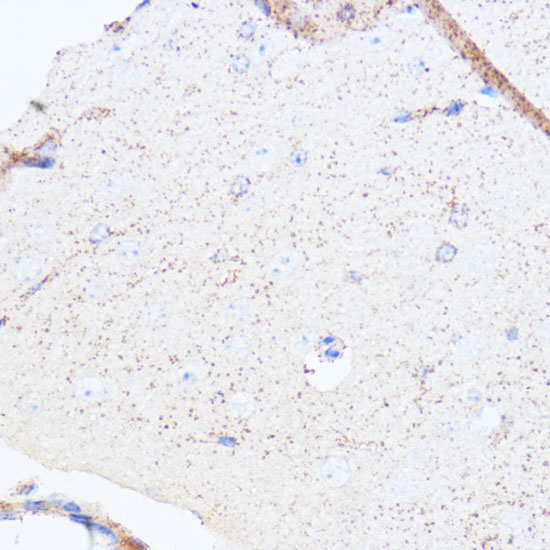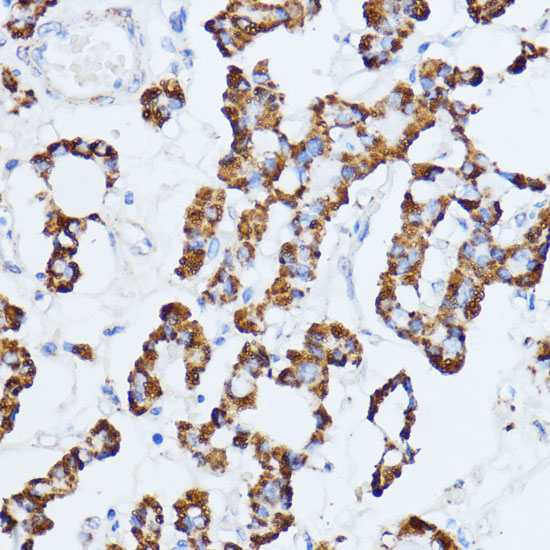Product Detail
Product NameMAOA Antibody
Host SpeciesRabbit
ClonalityPolyclonal
IsotypeIgG
PurificationAffinity purification
ApplicationsWB,IHC,IF
Species ReactivityHuman,Mouse,Rat
SpecificityThe antibody detects endogenous level of total MAOA protein.
Immunogen TypeRecombinant Protein
Immunogen DescRecombinant fusion protein of human Monoamine Oxidase A (Monoamine Oxidase A (MAOA)) (NP_000231.1).
Target NameMAOA
ConjugateUnconjugated
Other NamesMAOA;BRNRS;MAO-A
Accession NoUniprot:P21397
GeneID:4128
Uniprot
P21397
Gene ID
4128
Sdspage MW65kDa
Concentration1.0mg/ml
FormulationPBS with 0.02% sodium azide,50% glycerol,pH7.3.
StorageStore at -20˚C. Avoid freeze / thaw cycles.
Application Details
WB 1:500 - 1:2000
IHC 1:50 - 1:200
IF 1:50 - 1:200
Immunohistochemistry of paraffin-embedded rat brain using Monoamine Oxidase A (Monoamine Oxidase A (MAOA)) antibody.
Western blot analysis of extracts of various cell lines, using Monoamine Oxidase A (Monoamine Oxidase A (MAOA)) antibody.
Immunohistochemistry of paraffin-embedded mouse brain using Monoamine Oxidase A (Monoamine Oxidase A (MAOA)) antibody.
Immunofluorescence analysis of C6 cells using Monoamine Oxidase A (Monoamine Oxidase A (MAOA)) antibody.
Immunofluorescence analysis of NIH/3T3 cells using Monoamine Oxidase A (Monoamine Oxidase A (MAOA)) antibody.
Immunohistochemistry of paraffin-embedded human thyroid cancer using Monoamine Oxidase A (Monoamine Oxidase A (MAOA)) antibody.
This gene is one of two neighboring gene family members that encode mitochondrial enzymes which catalyze the oxidative deamination of amines, such as dopamine, norepinephrine, and serotonin. Mutation of this gene results in Brunner syndrome. This gene has also been associated with a variety of other psychiatric disorders, including antisocial behavior. Alternatively spliced transcript variants encoding multiple isoforms have been observed.
If you have published an article using product 32268, please notify us so that we can cite your literature.
et al,Nephrotoxicity induced by cisplatin is primarily due to the activation of the 5-hydroxytryptamine degradation system in proximal renal tubules
, (2021),
PMID:








 Yes
Yes



